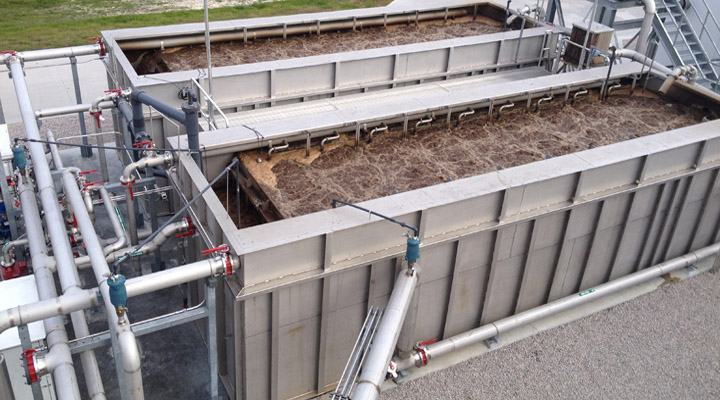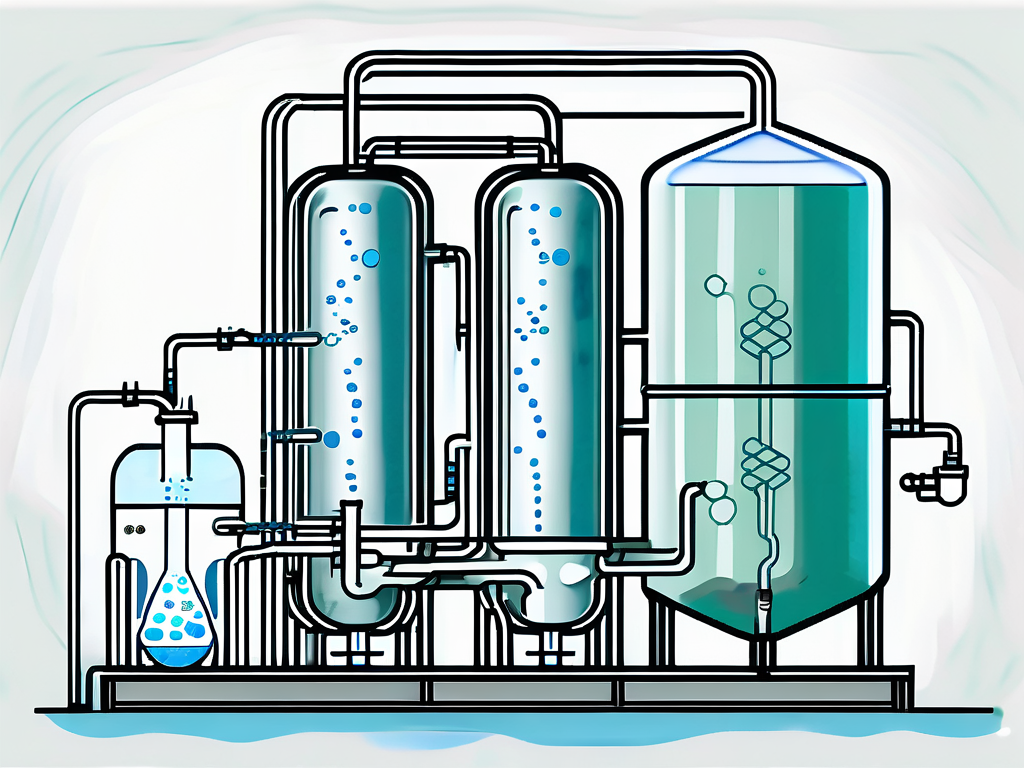The Advantages of Membrane Layer Bioreactors in Lasting Wastewater Administration
Membrane layer bioreactors (MBRs) represent a critical advancement in lasting wastewater management, efficiently merging biological treatment with innovative membrane layer filtration technology. This integration not just improves effluent top quality by successfully getting rid of pollutants however likewise opens avenues for water reuse in various applications, thus attending to journalism requirement for resource conservation. The compact layout of MBRs adds to substantial decreases in ecological impact and functional expenses. As the demand for lasting options intensifies, discovering the diverse advantages of MBRs may expose unexpected implications for the future of wastewater therapy systems.
Overview of Membrane Layer Bioreactors
Membrane bioreactors (MBRs) stand for a considerable advancement in wastewater treatment modern technology, integrating organic destruction with membrane layer purification to enhance the efficiency of the treatment process. This cutting-edge system incorporates the advantages of standard activated sludge processes with membrane modern technology, enabling for improved solid-liquid separation. MBRs utilize semi-permeable membranes to separate treated water from biomass, leading to high-quality effluent that can be reused or securely released right into the atmosphere.
The operational design of MBRs commonly includes a bioreactor where microorganisms break down raw material, followed by a membrane device that filters the blended liquor. This arrangement not just lessens the impact of the treatment facility yet additionally enables for greater biomass concentrations and minimized hydraulic retention times. Furthermore, MBRs can treating a broader series of contaminants, consisting of nutrients and pathogens, making them suitable for different applications, from municipal wastewater therapy to commercial effluent processing.
The combination of MBRs right into wastewater administration systems is indicative of a growing fad towards lasting and efficient techniques in environmental design. Their capacity to produce premium effluent while minimizing room demands positions MBR modern technology as an essential gamer in modern-day wastewater treatment options.
Enhanced Effluent Quality

The membrane purification procedure serves as a physical obstacle, making it possible for the retention of bacteria and particulate matter, which adds to a clearer and cleaner effluent (Membrane Bioreactor). MBRs run at greater biomass focus than traditional turned on sludge systems, promoting a lot more reliable biodegradation of pollutants. This results in a decrease in biochemical oxygen need (BOD) and total put on hold solids (TSS) degrees in the final effluent
Furthermore, MBRs demonstrate excellent performance in dealing with difficult wastewater structures, such as industrial effluents and wastewater with high nutrient tons. Therefore, the effluent produced is commonly of higher top quality, allowing for even more adaptable disposal choices and reduced ecological influence. Ultimately, the boosted effluent quality accomplished through MBR technology highlights its important function ahead of time lasting wastewater administration practices.
Water Reuse Opportunities
The high-grade effluent produced by membrane bioreactors (MBRs) opens up considerable chances for water reuse in different applications. MBRs successfully get rid of pollutants, including virus, put on hold solids, and organic issue, leading to cured water that meets or goes beyond regulative requirements for reuse. This quality enables the application of water reusing campaigns throughout varied sectors.
One prominent application remains in agriculture, where dealt with wastewater can be utilized for irrigation, advertising sustainable farming methods while saving freshwater resources. In addition, MBR-treated effluent can be used for commercial procedures such as air conditioning, cleaning, and as a procedure water resource, considerably minimizing the demand for safe and clean water in these operations.
In urban atmospheres, MBRs facilitate making use of reclaimed water for landscape watering, toilet flushing, and various other non-potable usages, adding to the overall strength of water supply systems. The integration of MBR modern technology in decentralized systems help in handling localized water demands, specifically in water-scarce areas.
Minimized Environmental Effect
How can the adoption of membrane layer bioreactors (MBRs) add to a minimized environmental influence in wastewater administration? MBRs dramatically boost the treatment performance of wastewater while decreasing eco-friendly disruptions. By integrating biological therapy processes with membrane layer filtration, MBRs properly get rid of a wide variety of toxins, including organic issue, nutrients, and microorganisms. This advanced reference filtration brings about higher-quality effluent, which is critical for safeguarding aquatic communities and reducing the burden on natural water bodies.
Furthermore, MBRs run at reduced hydraulic retention times compared to standard systems, causing smaller therapy plant footprints. This portable style decreases land use, consequently maintaining natural environments and biodiversity. The procedure also creates less sludge than standard techniques, mitigating disposal challenges and lowering greenhouse gas discharges connected with sludge management.
Furthermore, MBRs facilitate the recovery of useful resources, such as water and nutrients, adding to a round economy. By allowing water reuse for watering or commercial processes, MBRs aid alleviate freshwater deficiency, hence promoting lasting water utilize techniques. Inevitably, the adoption of MBR technology represents a significant stride towards decreasing the environmental impact of wastewater administration systems.
Financial Benefits of MBRs

Additionally, MBRs promote the production of top notch effluent, which can be recycled for different applications, such as agricultural watering and commercial procedures - Membrane Bioreactor. This reuse capacity can substantially reduce water purchase expenses, giving a financial reward for industries dealing with strict water laws
The portable layout of MBR systems also leads to reduced land needs, which is especially important in city areas where actual estate is expensive. By minimizing area, industries and towns can minimize land procurement and maintenance costs.
Moreover, MBRs typically require less frequent maintenance and have a longer life-span than standard systems, additionally adding to cost savings. In recap, the economic benefits of MBRs-- ranging from minimized operational costs to land savings and effluent reuse-- make them a compelling choice for sustainable wastewater administration, supplying both prompt and long-term economic advantages.
Verdict
Membrane layer bioreactors stand for a transformative method to lasting wastewater administration, combining biological therapy with sophisticated membrane layer filtration for superior effluent quality. Their capability for efficient contaminant elimination promotes water reuse, thus preserving crucial freshwater sources. Additionally, MBRs contribute to reduced environmental influences through small layouts and lower sludge generation. Economic advantages further view website enhance their viability, making MBRs an appealing service for attending to the obstacles of wastewater treatment and advertising lasting source management.
Membrane layer bioreactors (MBRs) stand for an essential development in lasting wastewater monitoring, successfully combining organic therapy with advanced membrane filtration technology.Membrane bioreactors (MBRs) stand for a substantial improvement in wastewater therapy technology, incorporating organic destruction with membrane layer filtration to enhance the performance of the therapy process.Attaining enhanced effluent quality is one of the most significant advantages of using membrane bioreactors (MBRs) in wastewater therapy.In addition, MBRs show outstanding efficiency in dealing with difficult wastewater structures, such as commercial effluents and wastewater with high nutrient loads.Integrating membrane layer bioreactors (MBRs) right into wastewater monitoring not just reduces environmental effect but likewise presents substantial economic advantages.